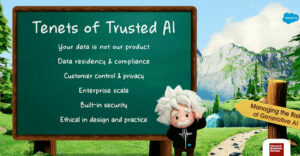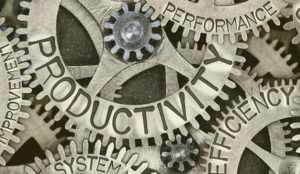
There was an interesting article in the January 2012 edition of Vanity Fair, a magazine I’ve come to enjoy though for many years regarded as another of those things my wife would like more than I would. But VF carries an interesting blend of current events and politics, as well as the glossy pictures and stories of pop-culture icons that seem to be necessary to sell a magazine these days.
I say necessary but for the exception of The New Yorker. How those people continuously pump out the level of quality journalism that they do, on a weekly basis, always amazes me. Malcolm Gladwell and James Surowiecki write for The New Yorker even after several books each and strong public speaking careers. That magazine has a formula that is no longer being emulated, I fear.
At any rate, the VF article is from the issue with Lady Gaga on the cover and is titled “You Say You Want a Devolution?” It’s about the apparent ossification of American culture over the last couple of decades or a bit more — roughly the span of time that I have tried to be an adult. The article’s main point is that we’ve made precious little progress in style, design and culture in that time. One hypothesis is that our creative juices have been consumed by the tech revolution.
Internet, WiFi, social media, video, audio, telephony all running through the gadget plus DVDs and a long list of other inventions that weren’t readily available or even invented two or three decades ago have consumed that part of our waking hours that other generations dedicated to style and culture. For emphasis, the article asks us to ponder pictures of street scenes from various decades. If you did this you could easily discern the difference between the 1960s and, say, the ’40s, but the ’90s and today? Not so much.
The Paradigm as Baseline
Not long ago I suggested that straight-line extrapolation from the present to some point in the future is not very good, but it is what we often settle for when forecasting. VF seems to be telling us that lately the straight line is fine. But here’s the kicker, straight lines work best within a paradigm. If you can identify the paradigm, then maybe you can reconnoiter and find your place a few pages forward. If you are transitioning paradigms, all bets are off.
I don’t think 2012 will be like what came before. I think ’12 will be the beginning of a new paradigm, and world-class thought leaders like Joseph Stiglitz, a Nobel laureate in economics, seem to agree. In another January 2012 article in Vanity Fair, Stiglitz argues that we are at the end of the manufacturing industrial paradigm and entering a services economy paradigm. A services paradigm will require full use of all the ideas that we in the front office have been evolving for the last five to 10 years.
So, what’s in store for ’12? Well, we’ve been in a quasi recession for almost five years, unemployment is stubbornly high, and in case you’ve been napping all this time, ’12 is a leap year, I mean, an election year. If there’s one thing that galvanizes politicos of all stripes, it’s an election, and while everyone in Washington might hate everyone else’s guts, there will be enough collaboration to cobble together enough votes to do something about the economy. That means a few more jobs and more meaningful growth than has been the norm lately. Perhaps there will even be an extra bowl of gruel for us ninety-niners.
So I look for a bounce in economic activity, but that’s the easy part. What’s harder is figuring out where the bounce happens. I watch fuel prices and note the relationship between them and economic activity. Low prices correlate with slack demand, but goose the economy and watch the price of benchmark crudes like West Texas Intermediate and Brent go north.
Note: I am not advising you to buy or trade crude oil or to do anything else investment-wise with this analysis.
Business Decarbonation
But if crude does go north, companies that want to catch the economic rise will need to be smart about keeping carbon out of their business processes to keep their costs from ballooning. That means conventional business — dare we say business as usual? — breaks down, and that is where the new paradigm comes in. Smart companies will be cranking up all the front-office tools and social ideas they’ve been accumulating and realize that a lot of it fits together and changes life as they know it.
The fit drives more frictionless business and more services, which naturally reduces reliance on face-to-face meetings and all the travel and expense that goes along with it. I am not saying that we’ll simply substitute a social encounter for the physical equivalent and be done, though we will. But the actual need for some of those more elaborate interactions will simply evaporate as we use social and other technologies to know more in the first place.
Marc Benioff is fond of quoting some of his company’s data concerning Chatter, one of its social media tools, and I don’t remember the exact numbers, but they include categories like reductions in email, meetings, phone calls and more, and the reductions are significant. The information people need and that they’ve historically received through these older sources has been rendered in a more available and efficient format through social media. This has yielded a new term in the industry, u201cthe social enterprise,u201d and it typifies the paradigm shift that I am talking about.
The social enterprise is not limited to a few startups at Routes 92 and 101 south of San Francisco. We saw companies like GE Capital, Burberry and Toyota drinking the lemonade in 2011, and ’12 will be the year they start to show results. 2012 will also be the year that middle adopters and laggards in general wonder why they aren’t feeling the warmth of the recovery, and this will be their answer and motivation.
The Subscription Economy
Also, the subscription economy that people like Tien Tzuo, CEO of Zuora, have been talking about will make an important contribution. Subscribing to services of a product rather than buying the product itself will take cost, risk and waste out of many transactions and relationships. A subscription comes at a lower price point than the item itself, which makes trying a product easier and less prone to risk. If the service the product provides does not meet the need, you can cancel or change the subscription.
This aspect of subscriptions means customers can make faster decisions with less deliberation and wondering “What if?” At the same time, a subscription vendor will invest more in ensuring a customer is happy with the solution fit so that the long-term cash flow is assured. The two things together provide a virtuous cycle that’s good for business and good for the environment.
We’re fond of saying that the economy turns about every 10 years, and we are also fond of remembering that the year of the network actually took a decade to be realized. These are not contradictory. Networking’s early adopters got value right away from their investments, but the economy made a dramatic turn once networking got to critical mass, and I think we’re in an analogous situation with social technologies.
We’ve been messing around with social for a long time, but two important threads are being woven together. Technological dispersal and personal understanding of the technologies is meeting economic demand for better, faster and cheaper ways to do business in an era of limits. That is what’s driving the new paradigm.
We might have to wait a bit longer to get new hairstyles, music genres and fashions but I think the thing that’s driven us in the tech era (i.e. innovation) is alive and well, and we’ll see plenty of it in the new year. Who knows? I could even be right.

























































I suggest a further step to "take cost, risk and waste out of many transactions and relationships" is a radical shift toward letting customers set prices based on perceived value, and explain their reasons–and letting sellers then selectively continue their relationship with those who price and explain fairly. That will expand markets and lead to more efficient value exchange, better matching willing buyers and sellers at individually tailored prices that are fair for a diverse range of specific contexts. Details are explained at http://www.fairpayzone.com/2011/12/fairpay-better-strategies-for.html
Does no one see the correlation between the way we’ve spent (or wasted) our time and money the last 30 years and the stagnation of innovation? The economy has been sucked dry by wars and other shifts in spending priorities, and the recession we’re living through now is but part of the bill that’s come due. Social media might represent technological advances, but to me they’re also but another example of the bread and circuses mentality that has dominated our culture during this time. If the "bounce" — and I seriously doubt there will be one — is based on the shift to a service economy, does that mean one with high-paying jobs or minimum wage jobs? Could I have another bowl of gruel, please?